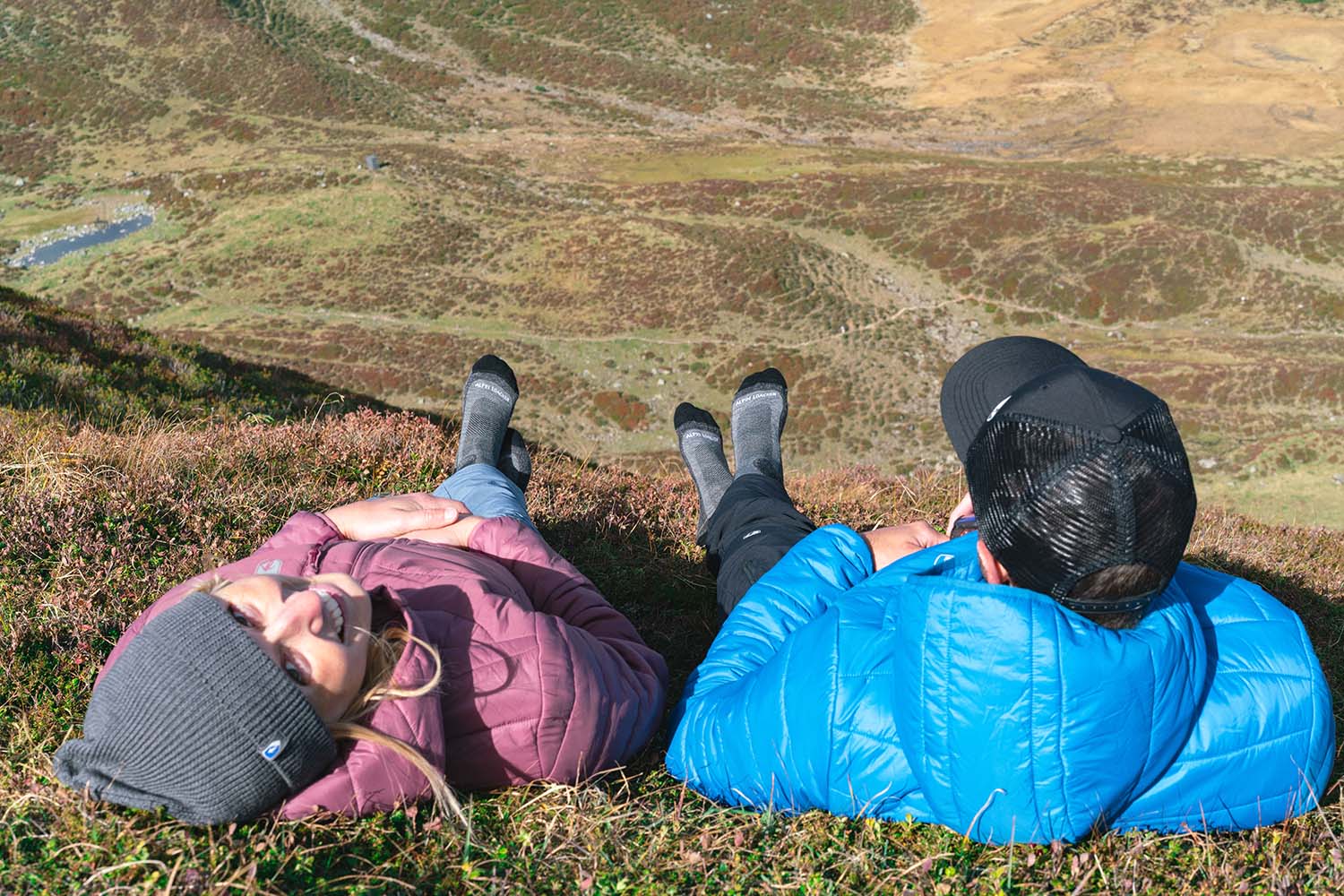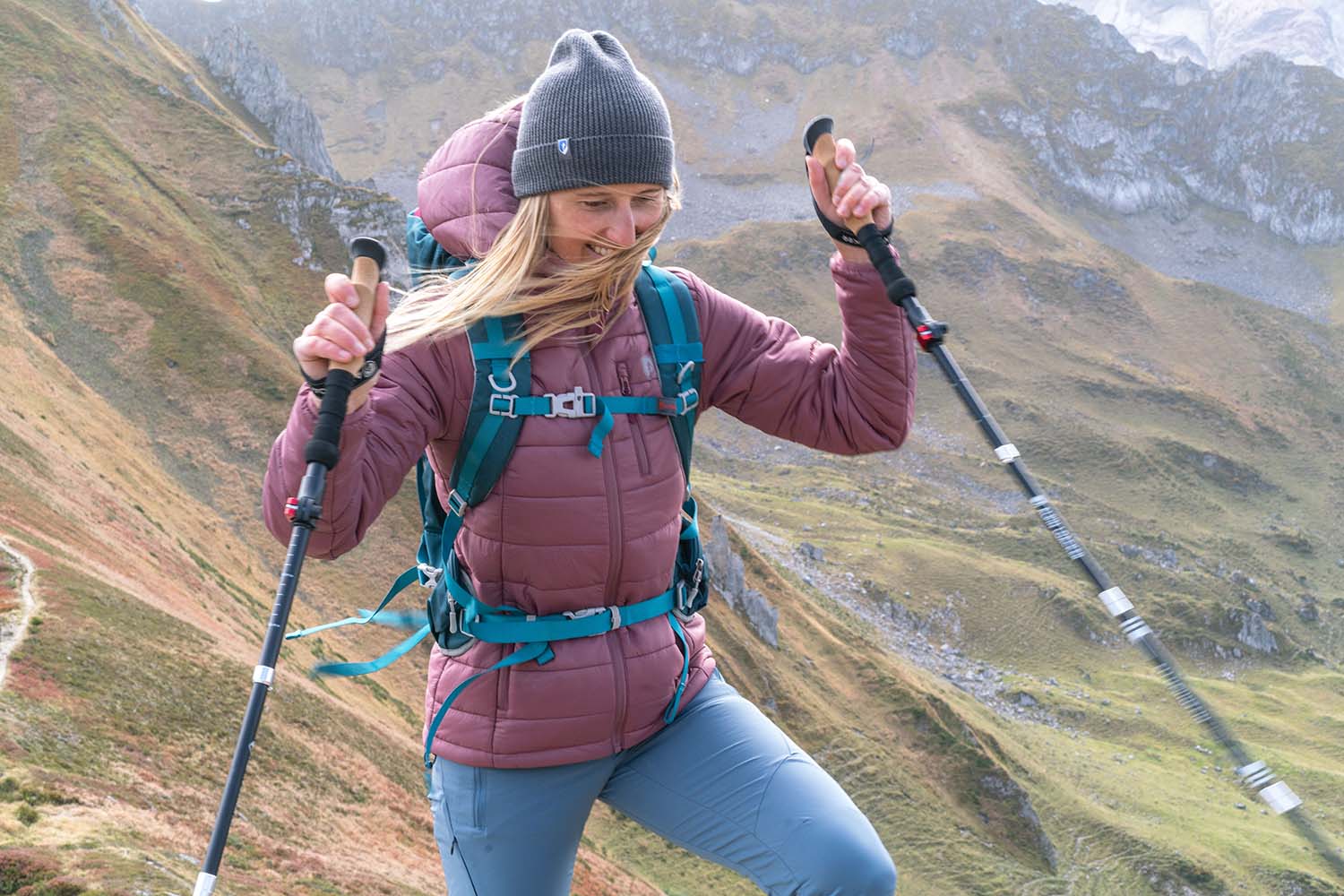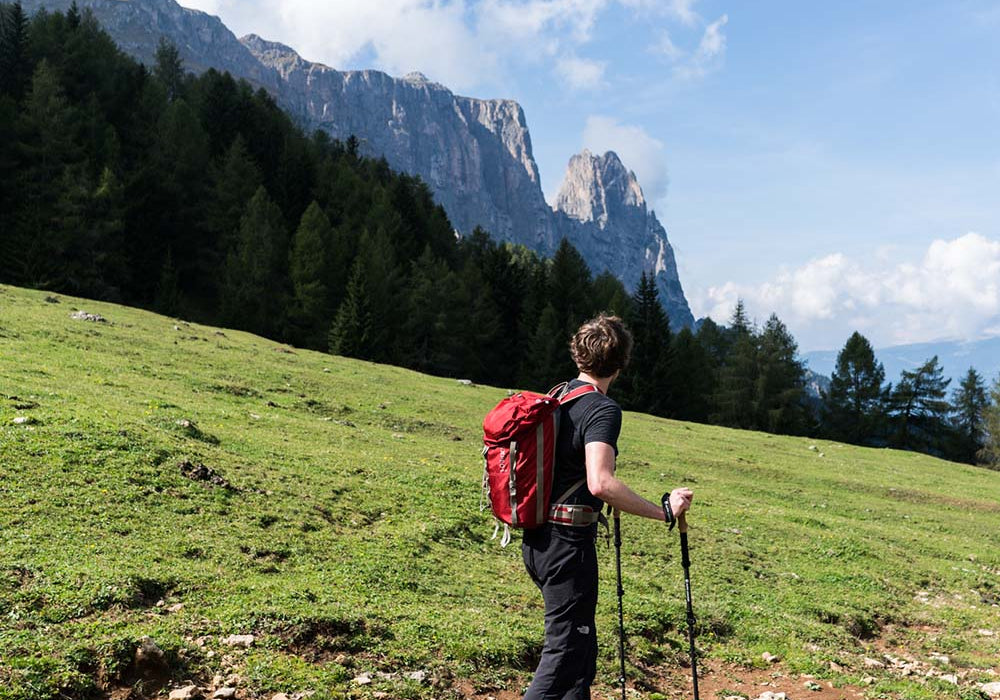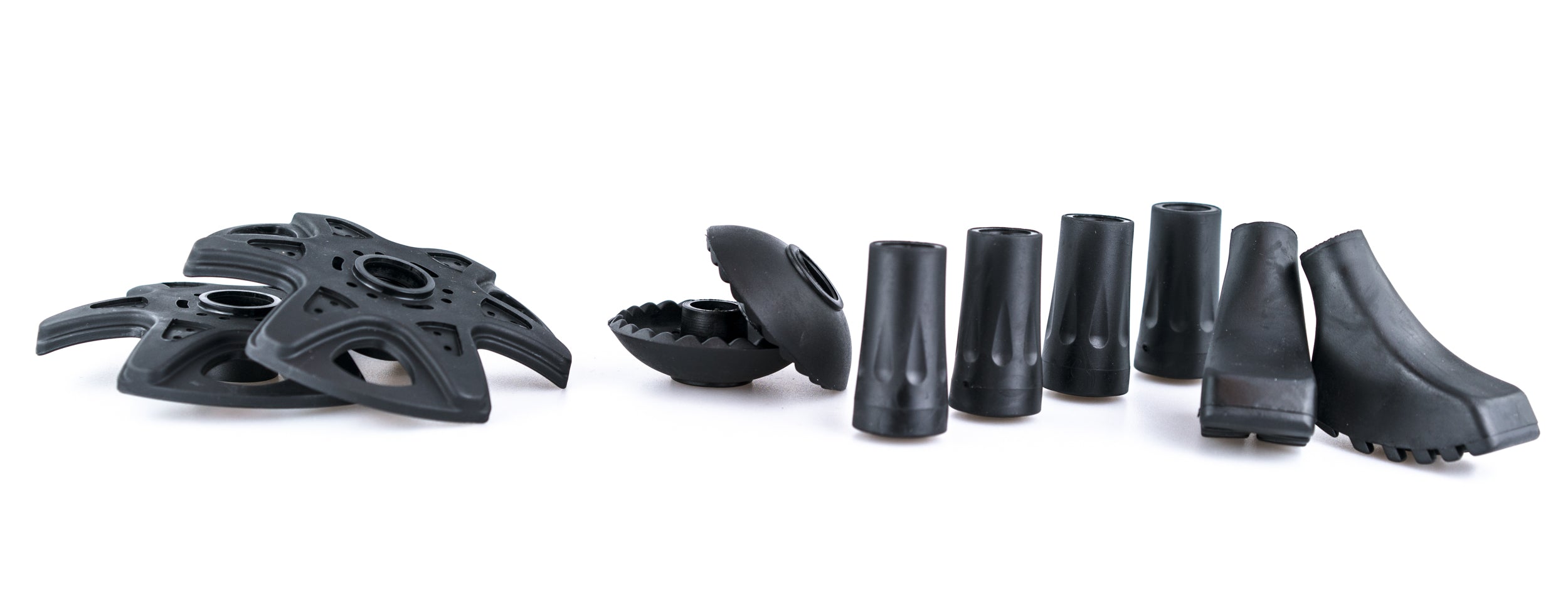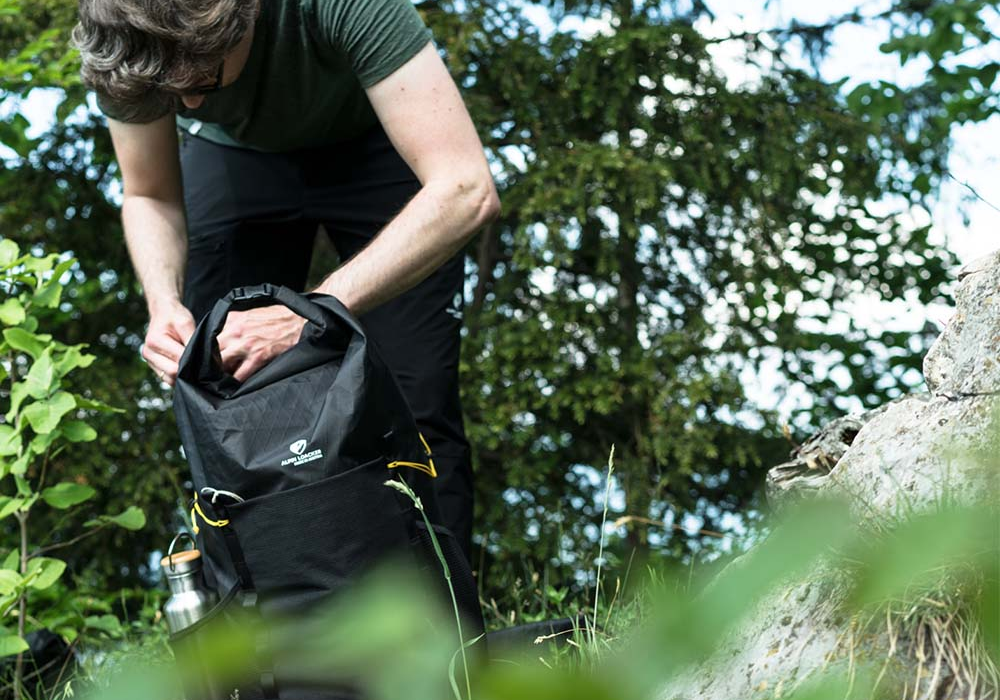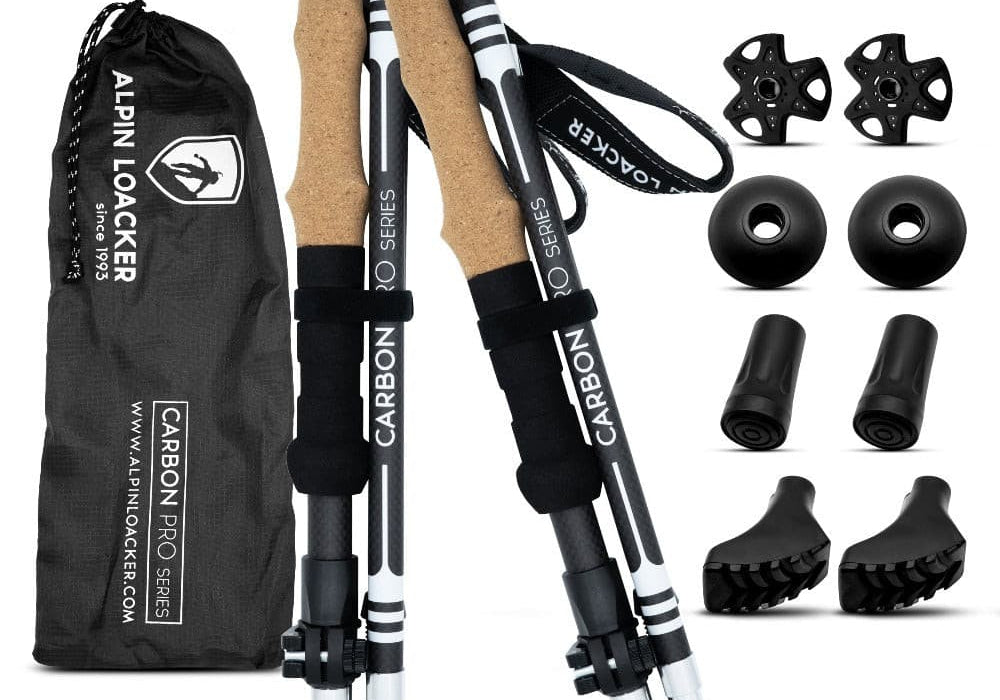Feb 24 2022
Isomatten Ratgeber

Welche Isomatte ist empfehlenswert?
Dieser Leitfaden für die Auswahl einer Isomatte soll Dir dabei helfen, die Isomatte zu finden, die Dir die bestmöglichen Komfort beim Schlafen im Freien bietet.
Wenn Du ein gezieltes Vorhaben hast und die zu erwartenden klimatischen Bedingungen auf Deiner Reise kennst, kannst Du das für dich am besten geeignetste Modell und das richtige Design der Isomatte wählen.
- Warum Isomatte?
- Was ist der R-Wert bei einer Isomatte?
- Welcher R Wert für welche Temperatur?
- Welche Schlafmatten gibt es?
A. Schaumstoff Isomatten
B. Selbstaufblasende Schlafmatte
C. Aufblasbare Isomatte
D. Luftmatten bzw. Luftkammermatten
mit Daunen- oder Mikrofaserfüllung - Wie lagere ich meine Isomatte am besten?
- Was ist wichtig bei einer Isomatte?
- Wie groß muss eine Isomatte sein?
- Sind Isomatten wasserdicht?
- Welche Isomatte für Seitenschläfer?
- Welche Isomatte fürs Zelten? bzw. Wie schläft man im Zelt am besten?
- Camping für Zwei: Die doppelte Schlafunterlage
- Welches Gewicht hat eine leichte Isomatte?
- Welche Stärke soll eine Isomatte haben?
- Was legt man unter eine Luftmatratze?
1. Warum Isomatte?
Ganz einfach: die Isomatte ersetzt Deine Matratze von Zuhause. Dort schläfst Du gewöhnlicherweise in einem Bett und nicht auf dem harten Boden. Wer in den Bergen oder auf sonstigen Trekking Touren draußen nächtigt sollte den nächsten Tag erholt und fit beginnen. Erholsamen Schlaf bekommst Du von einer guten, Dir entsprechenden Isomatte.
Damit Dein Rücken nicht schmerzt und Du vor nassem Boden und Kälte geschützt bist ist eine komfortable Schlafmatte mindestens so wichtig wie ein guter Schlafsack.
2. Was ist der R-Wert bei einer Isomatte?
Technisch gesehen ist der R-Wert ein Maß für den Wärmewiderstand. Je höher der R-Wert, desto wärmer ist die Unterlage. Dieser Wert wird nicht nur zur Messung von Schlafunterlagen verwendet, auch Ingenieure und Wissenschaftler verwenden den R-Wert, um alles von Fenstern bis zu Glasfasern zu messen.
3. Welcher R-Wert für welche Temperatur?
Beachte, dass der R-Wert nicht dasselbe ist wie die Temperaturwerte, mit denen die Wärme von Schlafsäcken bewertet wird. Die Wärmeleistung einer Schlafunterlage wird auf zwei Arten angegeben: R-Wert oder eine empfohlene Gradzahl.
Was ist also der Unterschied?
Der Schutz vor Kälte ist entscheidend für einen erholsamen Schlaf. Die Isolierung, die Deine Isomatte bietet, unterscheidet sich stark von der Wärme, die Dein Schlafsack erzeugt. Ein Schlafsack hält mit seiner Füllung die kalte Luft draußen und lässt die Luft zirkulieren, während er Deinen Körper aufwärmt. Die Isomatte funktioniert jedoch anders. Deine Schlaf Unterlage hat die Aufgabe, einen Wärmewiderstand gegen den kalten, harten Boden zu erzeugen.
Faktoren wie Feuchtigkeit, Oberfläche und die eigenen Komfort-Bedürfnisse machen es fast unmöglich, eine Outdoor Matratze für alle geltende Temperaturklasse zu bestimmen. Bei Schlafsäcken wird ein EN-Bewertungssystem verwendet, das anhand bestimmter Konstanten einen Komfort- und Risikobereich vorschlägt, der den Benutzern hilft, Schlafsäcke verschiedener Marken zu vergleichen. Schlafunterlagen werden jedoch nach ihrem R-Wert bewertet. Er ist sozusagen der Standardwert, für den Vergleich der Wärme verschiedener Schlafmatten.

Grafische Darstellung des R-Wertes.
4. Welche Schlafmatten gibt es?
A. Schaumstoff Isomatten
Hier bestimmt die Qualität des Schaumstoffes wie zuverlässig und langlebig die Isomatte ist. Parameter dafür ist die Druckbeständigkeit und Rückstellfähigkeit des Materials.
Günstige Schaumstoffmatten sind meist aus PE (Polyethylen) und teurere Schlafmatten aus EVA.
Bei Ethylen-Vinylacetat-Schaumstoff (EVA) handelt es sich um einen feinporigen, geschlossenzelligen Schaumstoff aus dem Copolymer Ethylen-Vinylacetat (EVA). EVA-Schaumstoffe zeichnen sich durch ihr geringes Gewicht, ihre Haltbarkeit, eine hohe Flexibilität und Elastizität aus. Es ist stark wärmeisolierend und nimmt kein Wasser auf.
PE-Matten sind schon ab 10 Euro im Handel erhältlich. Namenlose EVA-Matten sind ab ca. 25 Euro im Handel erhältlich.
Diese Isomatten sind entweder glatt oder mit einer Noppen- oder Waffelstruktur versehen, die die Wärmeleistung erhöhen.

Schaumstoffmatten sind sehr leicht, brauchen aber viel Platz.
B. Selbstaufblasende Schlafmatte
Wie der Name schon sagt, braucht es kein weiteres Tool um diese Schlafmatratzen mit Luft zu füllen. Man öffnet das Ventil und die Isomatte füllt sich mit Luft. Um die Luft wieder herauszulassen, öffnet man das Ventil und drückt die Luft raus. Die Luft dämpft und isoliert zugleich.
Der Vorteil: Selbstaufblasende Isomatten sind leicht handzuhaben und haben ein kleines Packmaß. Nachteil: Nachjustieren des Luftdrucks von außen ist nicht möglich. Sprich man kann die Festigkeit der Matratze nicht selber anpassen.
C. Aufblasbare Isomatte
Aufblasbare Isomatten kombinieren minimales Packvolumen mit ausgezeichneten Liegeeigenschaften. Diese Schlafmatten funktionieren mit einem Luftkammer Prinzip, ähnlich wie eine Luftmatratze. Hier werden luftdichte, extrem leichte Laminate zu einer Kammer Konstruktion verarbeitet.
Durch das Aufpumpen mit Luft lässt sich der Härtegrad der Matratze individuell regulieren. Damit Du Beschädigungen der Hülle während einer Trekking-Tour schnell beheben kannst, solltest Du ein geeignetes Reparatur-Kit dabei haben. Bei vielen aufblasbaren Isomatten ist Reparaturmaterial bereits im Lieferumfang enthalten.
Eine kleine Pumpe oder ein Pumpsack erleichtert das Aufblasen. Sie verhindern zudem das Eindringen von feuchter Atemluft. Damit keine Schimmelbildung entstehen kann, sollte nach einer Trekking Tour die Isomatte möglichst lange bei offenem Ventil gelagert werden.

Aufblasbare Isomatten kannst Du selber regulieren.
D. Luftmatten bzw. Luftkammermatten mit Daunen- oder Mikrofaserfüllung
Um die Wärmeleistung zu steigern sind einige Luftkammermatten mit Daunen- oder Mikrofaserfüllung ausgestattet. Diese Konstruktion ist deutlich wärmer als die Verarbeitung bei Schaumstoffmatten oder selbstaufblasende Isomatten. Zudem sind sie extrem leicht und komprimierbar.
Isomatten mit Füllung sollten nur mit Pumpe oder dem integrierten Packsack, der als Pumpe dient, aufgeblasen werden. Ansonsten kann feuchte Luft ins Innere gelangen und das Füllmaterial auf Dauer zerstören.
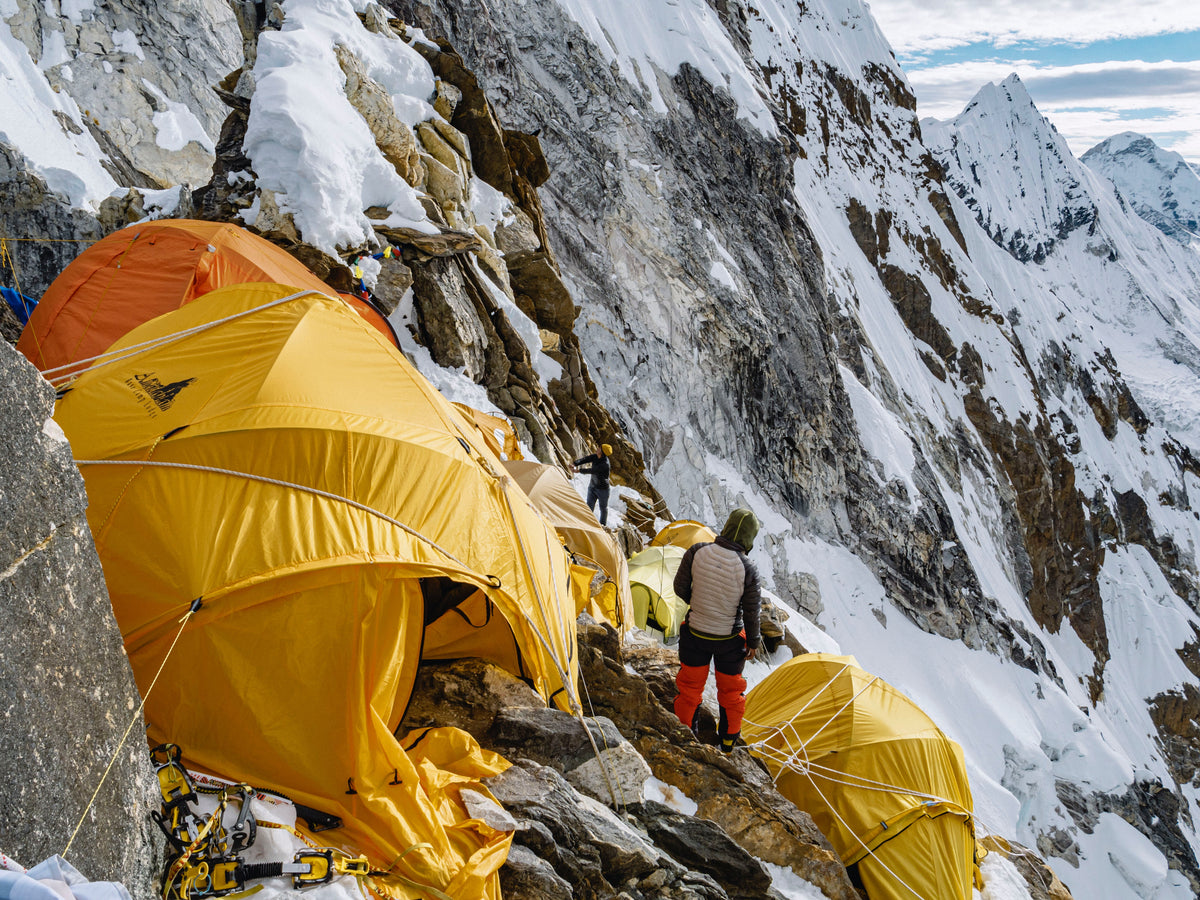
Eine Isomatte mit Mikrofaser bzw. Daunenfüllung ist erst ab ca. -10°C nötig.
5. Wie lagere ich meine Isomatte am besten?
Fast alle Isomatten können komprimiert gelagert werden.
AUßER Isomatten mit Daunenfüllung! Am besten du lagerst sie ausgerollt und mit offenem Ventil.
6. Was ist wichtig bei einer Isomatte?
Die Isomatten sollte Deinem Vorhaben, Deinen Bedürfnissen und Deinem Körperbau entsprechen.
Für lange Touren und Trekking solltest Du eine leichte Isomatte, die sich auf ein kleines Päckchen komprimieren lässt, zurückgreifen. Ist die Gegend feucht? Dann solltest Du keine Daunenfüllung, sondern eine Mikrofaserfüllung wählen, oder ganz auf eine Füllung verzichten, wenn es die Temperaturen zulassen. Bedenke, dass eine Mikrofaser bzw. Daunenfüllung erst ab ca. -10°C nötig ist. Außerdem sollte Deine Luftmatte ‘unkompliziert’ aufblasbar bzw. mit Luft befüllbar sein. Am besten Du probierst im Geschäft verschiedene Varianten aus und nimmst die Dir am besten zugeschnittene Variante.
Camping Urlaub: Du musst Dein Equipment nicht schleppen? Dann hast Du die Qual der Wahl. Am einfachsten sind allerdings Schaumstoffmatten, weil Du sie erst gar nicht aufblasen oder aufpumpen musst. Sie sind zwar etwas größer im Packmaß aber aber genauso komfortabel wie die kleineren Varianten. Steht Komfort für Dich an erster Stelle, kannst Du auch auf dickere Matratzen, mit bis zu 10 cm Dicke, zurückgreifen.

Schaumstoffmatten eignen sich ideal für mediterrane Böden. Sie sind robust und bestens für die am Boden liegenden Pinien- und Zypressen Nadeln, geeignet.
Für Frauen gibt es beispielsweise Isomatten, die an der Hüfte weiter konstruiert sind, dafür aber an den Schultern weniger breit sind.
Groß und schwer: Bist Du ein großes und schweres Kaliber, solltest Du auf billige PE-Schaumstoffmatten verzichten. Da sich die Matte eindrücken wird und Du keine isolierende Funktion mehr hast. Du liegst dann wortwörtlich auf dem Boden.
Bei Expeditionen steht Packmaß und Gewicht an erster Stelle. Die Wärmeleistung muss zu den äußeren Bedingungen passen. Für diesen Zweck wurden hochwertige EVA-Schaumstoffmatten mit Waffelstruktur entwickelt bzw. Isomatten mit Daunenfüllung die Dich bei einer Temperatur von -40°C noch warm halten. Letztere sind aber vom Gewicht deutlich schwerer als Schaumstoffmatten.

Auf langen beschwerlichen Strecken zählen in erster Linie Gewicht und Platz.
Hersteller in diesem Segment führen meist einen R-Wert Tabelle, nach der Du dich richten kannst. Es ist wichtig zu wissen, ob Du Deine Isomatte das ganze Jahr oder nur für bestimmte Jahreszeiten verwendest. Auch klimatischen Bedingungen wie Feuchte und Trockenheit spielen eine große Rolle.
7. Wie groß muss eine Isomatte sein?
Die Isomatte sollte Deiner Körpergröße entsprechen. Liegst Du zwischen zwei Größen, ist es Ratsam, die längere Isomatte zu nehmen. Musst Du an Gewicht sparen und es zählt jedes Gramm auf Deiner Tour, dann kannst Du auch eine kürzere Isomatte verwenden.
8. Sind Isomatten wasserdicht?
Ja Isomatten sind wasserdicht. Das Konzept Isomatte würde sonst keinen Sinn machen. Die Matratze soll Dich warm und trocken halten und vor feuchtem Untergrund schützen.
9. Welche Isomatte für Seitenschläfer?
Wenn Du Seitenschläfer*in bist ist es ratsam, eine dickere Schlafmatte zu verwenden, damit Du eine entsprechende Isolation hast und auch in Seitenlage angenehm schlafen kannst. Es hängt natürlich auch von Deinem Gewicht ab, was für eine Dicke nun für Dich passend ist.

Als Seitenschläfer*in ist es Ratsam, eine aufblasbare und dickere Isomatte zu verwenden.
10. Welche Isomatte fürs Zelten? bzw. Wie schläft man
im Zelt am besten?
Miss Dein Zelt aus und teste vor jeder Tour dein Equipment! Vergewissere Dich, dass Deine Isomatte ins Zelt passt. Wenn Du nicht auf ein Kissen verzichten möchtest, greife auf ein aufblasbares und komprimierbares Kissen, speziell für den Outdoorbereich, zurück. Dies kann vor allem den Halswirbel entlasten.

Passt die Matratze ins Zelt?
11. Camping für Zwei: Die doppelte Schlafunterlage
Ihr seid zu zweit auf Tour und schlaft gemeinsam in einem Zelt? Schon einmal an eine Schlafmatte für 2 Personen gedacht? Dies kann wesentlich bequemer sein und einen großen Wärme Vorteil haben. Man kann zum/zur Partner*in rutschen ohne von der Isomatte runterzurutschen. Gerade wenn es sehr kalt ist, ist man froh, wenn man sich gegenseitig wärmen kann. Dies hat schon Leben gerettet!

Es ist eine Überlegung Wert sich eine Isomatte für zwei Personen anzuschaffen,
wenn Ihr öfters zu zweit unterwegs seit.
12. Welches Gewicht hat eine leichte Isomatte?
Der Einsatzbereich bestimmt das Gewicht der Schlafmatte. Hier ist eine grobe Einteilung:
Ultraleicht = unter 500 Gramm
Normal = 500 bis 1.000 Gramm
Komfort = über 1.000 Gramm
13. Welche Stärke soll eine Isomatte haben?
“Wie dick soll eine Isomatte sein?” Hier gibt es leider keine unmittelbare Antwort. Es hängt wie auch sonst, von dem Einsatzbereich der Schlafmatte ab. Es gibt sehr dünne Isomatten, die bei 1,8 cm anfangen und eher dickere Luftmatratzen, etwa 5 cm. Der Durchschnittswert liegt etwa bei 3,8 cm.
5 cm dicke Schlafmatten haben einen deutlich höheren Komfortbereich wie 1,8 cm dünne Isomatten. Dafür sind sie aber auch deutlich schwerer. Manch Eine(r) schläft gerne härter, als die/der Andere.
14. Was legt man unter eine Luftmatratze?
Wenn Du eine ultraleichte Isomatte verwendest, empfiehlt es sich manchmal eine Unterlage zu verwenden. Da das Material defektanfällig für spitze Steine und scharfe Kanten ist.
Verwende zuallererst immer jenes Equipment, das du sowieso schon in deinem Rucksack trägst. Beispielsweise kannst Du Deinen Biwaksack/Biwak Decke als unterlage für Deine Isomatte, verwenden. Doppelt gemoppelt. Du kannst von einer Alufolie bis Baumwolldecke alles verwenden. Möchtest du es leicht und etwas professioneller, gibt es z.B. von der Marke Exped eine Schaumstoffmatte aus EVA die 0,4 cm dick ist und etwa 260 g wiegt. Es gibt auch günstigere Modelle aus PE. Aufblasbare Isomatten lassen sich gut mit Schaumstoffmatten kombinieren.

Improvisiere: Hast Du eine Yogamatte? Die kannst Du im Sommer genauso gut als Isomatten Unterlage verwenden.
Wer erholsam schläft, ist am nächsten Tag fitter und mehr bei der Sache.

Ende





